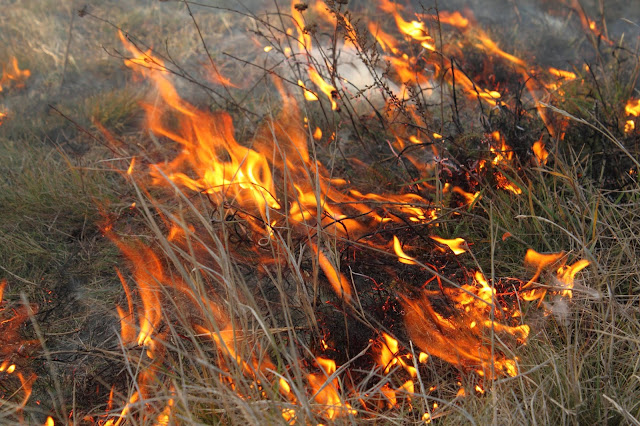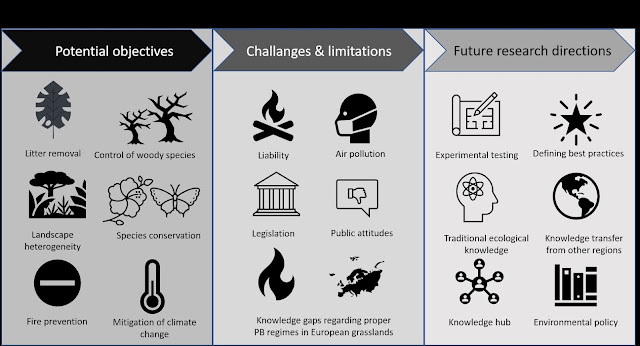Our invited review paper about the applicability of prescribed burning for the conservation of European grasslands has recently been published in Current Opinion in Environmental Sustainability and Health.
The citation of the paper is
Valkó, O., Deák, B. (2021): Increasing the potential of prescribed burning for the biodiversity conservation of European grasslands. Current Opinion in Environmental Sustainability & Health doi: 10.1016/j.coesh.2021.100268
The paper is open access, please click here to download.
Our aim was to summarize the knowledge related to the applicability of prescribed burning as a potential conservation tool in European grasslands. Prescribed burning (PB) means a carefully planned and executed application of fire in order to reach a specific management objective. In many fire-prone ecosystems, such as the South American cerrado, the South African fynbos or the North American prairies, PB practices are integral elements of conservation and restoration projects aiming to increase the biodiversity in open landscapes. Contrary, in Europe, most PB projects are related to forest ecosystems and shrublands. We found that there were only a few dozens of experimental PB studies in European grasslands, and the large-scale application of prescribed fire is even more scarce. It would be important to gain knowledge about this cost-effective conservation measure, as based on studies from other continents or ecosystems, PB might be a feasible tool to address conservation problems, such as abandonment, intensification, invasive species and climate change.
Our review emphasises that the currently available knowledge about PB effects in European grasslands is not sufficient to completely evaluate its applicability. In most experiments PB was applied in small plots, resulting in homogeneous fire patterns different from wildfires. None of the European experiments applied natural-like fire regimes, but used two approaches instead: either yearly burning of the same parcels for many years or testing the effect of a single PB event. The first approach does not resemble natural fire regimes and does not allow the regeneration of the vegetation between burns. The second approach often had more promising results, as single PB can have favorable short-term effects, but those are less persistent than in case of a complex fire regime with well-suited fire return intervals.
Please find below the abstract and graphical abstract of the paper.
Abstract




No comments:
Post a Comment